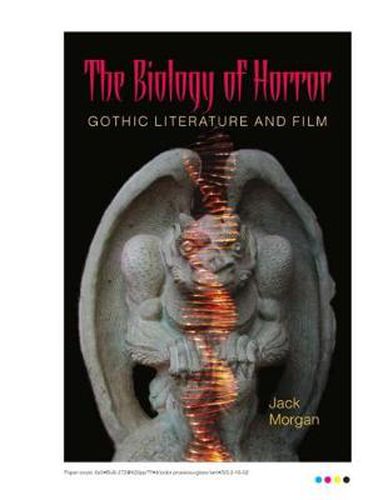Readings Newsletter
Become a Readings Member to make your shopping experience even easier.
Sign in or sign up for free!
You’re not far away from qualifying for FREE standard shipping within Australia
You’ve qualified for FREE standard shipping within Australia
The cart is loading…






In this study of fearful fictions and films, Jack Morgan rends the gothic’s biological core from its oft-discussed psychological elements and argues for a more trans-historical conception of the gothic, one negatively related to comedy. This work dissects popular examples from the gothic literary and cinematic canon, exposing the inverted comic paradigm within each text. Rooting his study in comedy as theoretically conceived by Suzanne Langer, C.L. Barber and Mikhail Bakhtin, Morgan analyses the physical and mythological nature of horror in inverted comic terms, identifying a biologically grounded mythos of horror. Motifs such as sinister loci, languishment, masquerade, and subversion of sensual perception are contextualized here as embedded in an organic reality, resonating with biological motives and consequences. Morgan also devotes a chapter to the migration of the gothic tradition into American horror. Morgan’s subjects range from high gothic classics like Matthew Lewis’s
The Monk , Ann Radcliffe’s
The Mysteries of Udolpho
and Mary Shelley’s
Frankenstein , to later literary works such as Poe’s macabre tales, Melville’s
Benito Cereno , H.P. Lovecraft’s
The Shadow Over Innsmouth , Shirley Jackson’s
The Haunting of Hillhouse , Stephen King’s
Salem’s Lot
and Clive Barker’s
The Damnation Game . Films featured include
Nosferatu ,
Invasion of the Body Snatchers ,
Friday the 13th ,
Night of the Living Dead ,
Angel Heart ,
The Stand
and
The Shining .
$9.00 standard shipping within Australia
FREE standard shipping within Australia for orders over $100.00
Express & International shipping calculated at checkout
In this study of fearful fictions and films, Jack Morgan rends the gothic’s biological core from its oft-discussed psychological elements and argues for a more trans-historical conception of the gothic, one negatively related to comedy. This work dissects popular examples from the gothic literary and cinematic canon, exposing the inverted comic paradigm within each text. Rooting his study in comedy as theoretically conceived by Suzanne Langer, C.L. Barber and Mikhail Bakhtin, Morgan analyses the physical and mythological nature of horror in inverted comic terms, identifying a biologically grounded mythos of horror. Motifs such as sinister loci, languishment, masquerade, and subversion of sensual perception are contextualized here as embedded in an organic reality, resonating with biological motives and consequences. Morgan also devotes a chapter to the migration of the gothic tradition into American horror. Morgan’s subjects range from high gothic classics like Matthew Lewis’s
The Monk , Ann Radcliffe’s
The Mysteries of Udolpho
and Mary Shelley’s
Frankenstein , to later literary works such as Poe’s macabre tales, Melville’s
Benito Cereno , H.P. Lovecraft’s
The Shadow Over Innsmouth , Shirley Jackson’s
The Haunting of Hillhouse , Stephen King’s
Salem’s Lot
and Clive Barker’s
The Damnation Game . Films featured include
Nosferatu ,
Invasion of the Body Snatchers ,
Friday the 13th ,
Night of the Living Dead ,
Angel Heart ,
The Stand
and
The Shining .